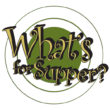When you have a refrigerator full of vegetables, a few eggs and some cheese, be nice to yourself and make a frittata. Or be even nicer and invites some friends for brunch.
Frittata is essentially an egg & cheese custard filled with sauteed vegetables, and, if you like, sausage, chicken or meat. Think of it as a quiche without the crust. And, because it lacks the crust, you don’t have to make one, or (heaven forfend), use a packaged pie crust.
Here’s what you do. Heat the oven to 450 and assemble all your ingredients. Sunday morning, I used two medium onions, three garlic cloves, one red and one green bell pepper, one zucchini, three small yellow squash, and a handfull of cherry tomatoes, all chopped into quarter-inch dice – except for the tomatoes which were halved and the garlic – finely chopped.
Using an iron skillet over a medium high flame, I heated two tbs olive oil and added the onion and garlic, sweating them until soft. Then the bell peppers, stirring for a few minutes and finally the squash. When the squash was slightly soft, I added two tbs of my house rub (a combination of salt, paprika, cayenne, garlic powder, oregano and thyme) and 3 tbs finely chopped basil.
While this was simmering, I whipped seven eggs with about 1/4 cup heavy cream and grated some Emmentaler Swiss and some parmigiana cheese. Use the cheese you have on hand, including cheddar, colby, provolone, muenster – cheeses with character but not too strong. If you use gorgonzola or blue cheese, be ready for the frittata to be overpowered. Good, but overpowered.
Now, stirring the eggs into the vegetable mixture, I folded in the Emmentaler , letting the mixture set for a minute while topping with the cut cherry tomatoes. Then into the hot oven for a 10 – 15 minutes until the center firms up and start to set. Turning on the broiler, I added the grated parmigiana, cooking until the cheese bubbled and started to brown. Removing the frittata, it should cool for a few minutes on the stove top. The sides will shrink a bit and you can cut the frittata like a pie in wedges and serve.
Frittata is lovely and filling as a main dish accompanied by some fruit, maybe cantaloupe or honeydew with blueberries.
It feeds eight brunch guests easily, or two for a couple of days.



